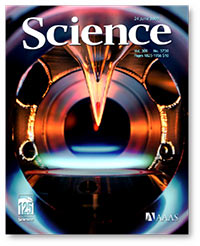Initial Aromatics Growth in Different Hydrocarbon Flames
Wenjun Li, who has just completed his Ph.D. this September, has spent his time evaluating alternate pathways to benzene formation in flames. While at UMass with Professor Westmoreland he used the MBMS system for gathering data. After transfering to NC State with Professor Westmoreland in 2010, he focused upon analyzing his experimental data and comparing it to theoretical chemical kinetic models.
Combustion provides about 85% of the energy all over the world, with applications in many areas. However, combustion is also potentially polluting. In recent years, there has been steady interest in benzene, polycyclic aromatic hydrocarbon (PAH), and soot formation in combustion. The initial aromatic intermediates have been generally considered as critical species for further formation of PAH and soot for non-aromatics combustion. To address the chemistry of fuel oxidation and initial aromatics growth, my research examines premixed flat flames of different surrogate model fuels at different stoichiometric conditions, including acetylene (Phi=0.95 and Phi=2.41), cyclohexane (Phi=1.00 and Phi=2.00), 1-hexene (Phi=0.89 and Phi=2.00), toluene (Phi=0.90 and Phi=1.50), toluene/methane (Phi=1.50), and toluene/acetylene (Phi=1.50) flames, all of which are important for practical combustion. Detailed flame structures are characterized experimentally, including flame temperature profiles measured by thermocouple or laser-induced fluorescence (LIF). Species mole-fraction profiles are mapped by flame-sampling photo-ionization molecular beam mass spectrometry, incorporating the high energy resolution of synchrotron-generated vacuum-ultraviolet (VUV) light at the Advanced Light Source of Lawrence Berkeley National Laboratory. A detailed elementary reaction mechanism is developed for the premixed-flame modeling, which generally makes satisfactory predictions for all these flames. Reaction pathway, flux, and sensitivity analyses are performed to investigate the different chemical pathways for fuel oxidation, initial aromatics growth, and the effects of stoichiometry.
(Note: the various flat flames seen on the left column throughout this website are from MBMS machines.)
Professor Westmoreland has a long history with MBMS, which began while studying combustion under Professor Jack Howard.

